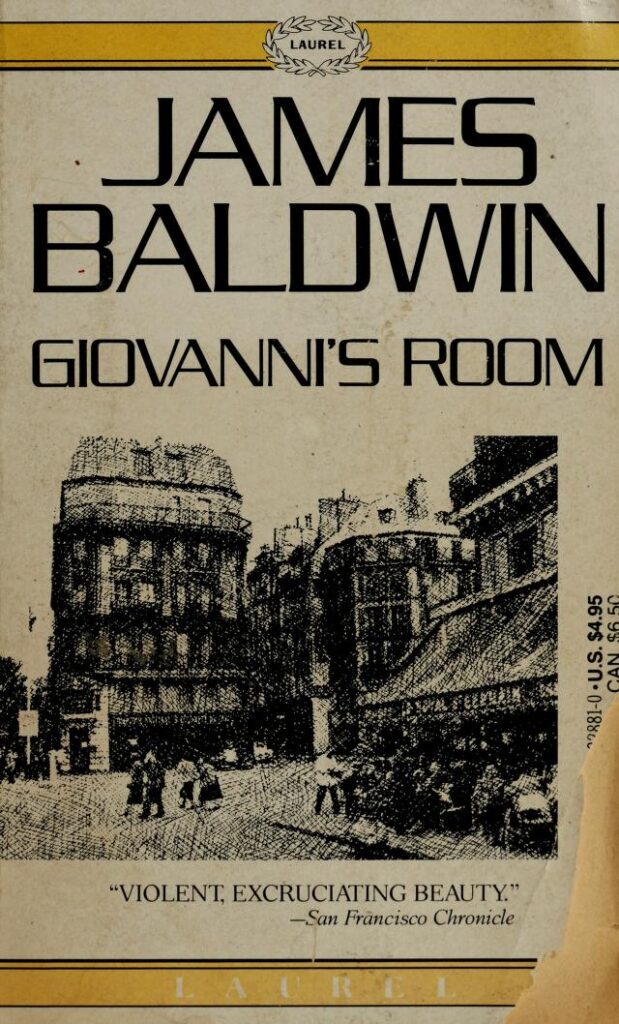Welcome to a captivating journey through the world of James Baldwin‘s iconic novel, Giovanni’s Room.
Published in 1956, this groundbreaking literary work has stood the test of time, remaining an important piece in the exploration of love, identity, and society.
In this blog post, we’ll delve into the key aspects that make Giovanni’s Room a timeless masterpiece, and why it continues to resonate with readers across generations.
The Author: James Baldwin
Before we delve into the novel, let’s get to know the brilliant mind behind it – James Baldwin. Born in Harlem in 1924, Baldwin was an African American writer and civil rights activist.
His works explored the complexities of racial, sexual, and social issues in America. Giovanni’s Room is one of his most influential novels and a testament to his ability to tackle sensitive topics with grace and depth.

image: Ted Thai / The LIFE Picture Collection via Getty Images
Plot Overview
Giovanni’s Room takes place in Paris and follows the story of David, an American man struggling with his identity and grappling with society’s expectations.
The novel begins with David receiving a letter from his girlfriend Hella, announcing her return to Paris after a long trip.
This prompts David to confront his feelings for his Italian male lover, Giovanni, whom he met in Paris.
Themes Explored
Baldwin’s novel touches upon various powerful themes that continue to resonate with readers:
a. Love and Desire
The novel delves into the complexities of love and desire, irrespective of gender or sexuality. Baldwin beautifully captures the passionate relationship between David and Giovanni and challenges societal norms of the time.
b. Identity and Self-Discovery
David’s internal struggle with his sexual identity and societal expectations leads him on a journey of self-discovery. The novel explores the price of denying one’s true self and the liberating power of acceptance.
c. Societal Pressures and Norms
Baldwin confronts the societal pressures and prejudices faced by individuals who defy conventional norms. Through David and Giovanni’s experiences, he sheds light on the impact of societal judgment on personal lives.
d. Expat Life in Paris
Set in 1950s Paris, the novel captures the vibrant expat community and their unique struggles while living in a foreign country. Baldwin presents Paris as a city of both liberation and constraint, mirroring the characters’ emotional conflicts.

Narrative Style
Baldwin’s writing style is poetic, evocative, and deeply introspective. He weaves the narrative with rich imagery and lyrical prose, making Giovanni’s Room a mesmerizing reading experience.
Reception and Impact
Upon its release, Giovanni’s Room received mixed reviews. While some praised Baldwin’s courage in tackling taboo subjects, others criticized the novel for its perceived lack of positive African American representation.
Over time, however, the novel’s reputation has grown, and it is now considered a classic in LGBTQ+ literature.
Contemporary Relevance
Despite being published over half a century ago, Giovanni’s Room remains strikingly relevant in today’s world.
Its exploration of love, identity, and societal norms transcends time and continues to resonate with readers navigating their own paths of self-discovery.
Giovanni’s Room by James Baldwin stands as a testament to the power of literature in exploring complex themes of love, identity, and society.
Baldwin’s timeless prose and deeply human characters offer readers a profound reflection on the universal struggles faced by individuals seeking authenticity in a world that often demands conformity.
If you haven’t yet embarked on this literary journey, we highly recommend you pick up a copy of Giovanni’s Room and immerse yourself in its thought-provoking narrative. Prepare to be moved, challenged, and inspired by James Baldwin’s masterpiece.










